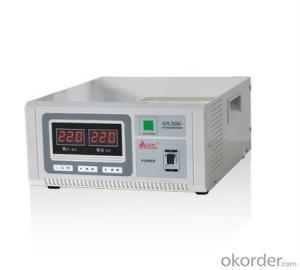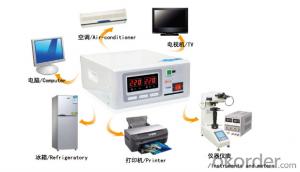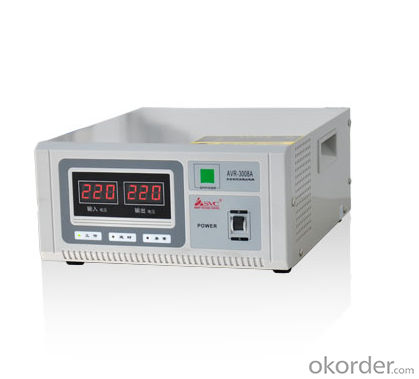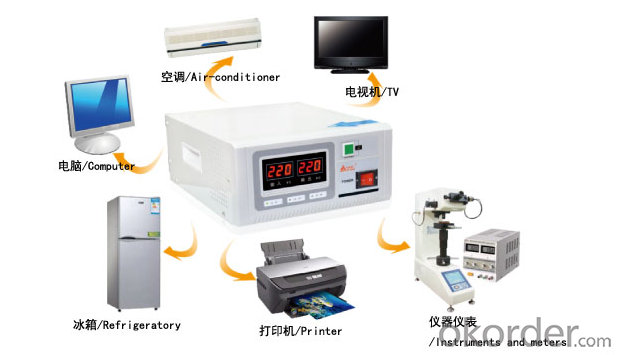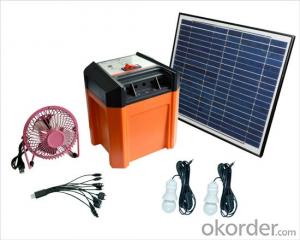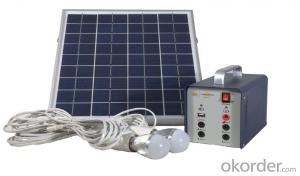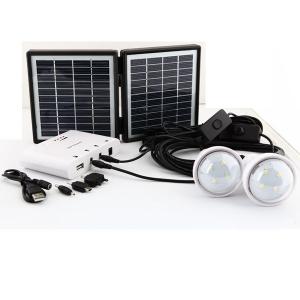Commercial Solar Energy Systems CVoltage Stabilizer Circuit Diagram 5kV Automatic Voltage Stabilizer
- Loading Port:
- China main port
- Payment Terms:
- TT OR LC
- Min Order Qty:
- 20 carton
- Supply Capability:
- 10000 carton/month
OKorder Service Pledge
OKorder Financial Service
You Might Also Like
Unipower circuit diagram 5kv automatic voltage stabilizer

Product Description

| Model | AVR-1008A | AVR-2008A | AVR-3008A | AVR5008A |
| Rated power | 1000VA | 2000VA | 3000VA | 5000VA |
| Display | LED or LCD, depends on user's choice | |||
| TECHNOLOGY | ||||
| Technology | CPU Based Digital Circuit + Transformer + Ralays | |||
| Efficiency | 98% | |||
| Phase | Single | |||
| INPUT | ||||
| Input voltage range & frequency | 140~280VAC/Same as AC | |||
| OUTPUT | ||||
| Output voltage range | 220VAC±10% | |||
| DISPLAY | ||||
| LED digital display status | Input voltage, output voltage | |||
| LED display status | Normal, Display, Fault | |||
| PROTECTION | ||||
| Protections | Over & low voltage, overload, high temperature, short circuit | |||
| ENVIRONMENT | ||||
| Environment of performance | Temperature 0℃~40℃, Humidity 20%~90% | |||
| Noise level | Less than 40dB | |||
| PHYSITAL | ||||
| (kg) / Net weight (kg) | 4.5 | 6.0 | 10 | 13.0 |
| (mm) / Unit dimention (mm) | 251*255*120 | 315*255*120 | ||

1. Wide range of input voltage
The UPS can offer normal and stable service voltage under its input voltage range. When the input voltage is out of its range the machine will switch to battery mode automatically to keep the output power in order to protect the equipment, such as computers, ensure they will not be damaged by the over high or over low voltage, users can continue the operation of equipment for a while or save the data on computers while the power network is abnormal.
2. Wide range of AVR(Automatic voltage regulation)
In the product’s input voltage range and under 3 steps of intelligent AVR function, it can provide a stable output voltage.
3. Automatic self detection when UPS on(LED).
Before the UPS on, red, yellow, blue LED will light up two times by cycle turns, after self detection UPS switch to AC mode/battery mode or working mode.
4. Silence function
In the "battery mode", shortly press the switch to turn off the buzzer. But the battery is about to run out or the load is too heavy, the buzzer sound cannot be muted.
5. Overload protection
In the battery mode, output voltage turn down correspondingly when it is overload, after the capacity of load is lower than the rated power then output voltage will back to rated value, it ensures the UPS will not shut down by abrupt overload which caused by surging current during the computer is working and other equipment is added.
6. Short circuit protection
When the mis-operation caused the load short circuit or computer failure (such as power tube breakdown of switch) cause short circuit, the UPS will shutdown automatically for protection.
7. The low current switch
This UPS adopts low current switch to extend the service life which is longer than conventional battery and high current switch in AC current path.
8. Automatic charging
There are two charging mode, charging time is faster than ordinary charging mode, higher efficiency, and greatly prolonging the service life of the battery.
9. With a bypass output
Independent bypass output socket for external printers or scanners of computer peripherals, with surge protection of the load.
- Q: How much maintenance do solar energy systems require?
- Solar energy systems require minimal maintenance. The panels are designed to be durable and can last for decades with little to no maintenance. Occasionally cleaning the panels to remove dirt and debris is recommended, and checking the system's performance periodically is also advised. Overall, solar energy systems require very little ongoing maintenance.
- Q: Can solar energy systems be used for powering outdoor appliances?
- Yes, solar energy systems can be used to power outdoor appliances. Solar panels collect sunlight and convert it into electricity, which can then be used to power various appliances such as outdoor lights, fans, heaters, or even charging stations for electronic devices. This renewable energy source is ideal for outdoor use as it eliminates the need for traditional power sources and reduces carbon emissions.
- Q: Are there any noise concerns with solar energy systems?
- Yes, there are generally no noise concerns with solar energy systems as they do not have any moving parts and operate silently.
- Q: Can solar energy systems be used in disaster relief efforts?
- Indeed, solar energy systems have proven to be effective in disaster relief endeavors, gaining popularity and significance in such situations. When calamities strike, they frequently disrupt the electricity supply, leaving affected areas devoid of power for extended periods, ranging from days to even weeks. This absence of electricity hinders relief efforts, impeding the provision of basic necessities such as lighting, medical care, communication, and clean water. In contrast, solar energy systems offer a dependable and sustainable power source in these circumstances. Consisting of solar panels that convert sunlight into electricity, these systems can energize various devices and appliances. They can be rapidly deployed to disaster-stricken regions, providing immediate access to electricity without relying on conventional power grids. There are numerous advantages to employing solar energy systems in disaster relief operations. Firstly, solar power is renewable and abundant, ensuring a continuous electricity supply even during prolonged emergencies. Secondly, these systems typically require minimal maintenance, decreasing the need for constant fuel supply or repairs. Consequently, they are more cost-effective and reliable in disaster-prone areas. Solar energy systems can be utilized in various ways during disaster relief endeavors. For instance, they can power mobile charging stations, enabling individuals to charge their phones and stay connected with their loved ones. Solar-powered lighting can illuminate temporary shelters, hospitals, and walkways, enhancing safety and security for victims and aid workers alike. Additionally, solar energy can power water purification systems, guaranteeing access to clean drinking water in regions where water infrastructure has been damaged or contaminated. Moreover, solar energy systems can be seamlessly integrated into existing relief infrastructure. Hospitals, schools, and community centers can have solar panels installed on their roofs, ensuring a reliable electricity source for critical operations. This reduces reliance on diesel generators or other fossil fuel-powered alternatives, which tend to be costly, noisy, and emit harmful pollutants. In conclusion, solar energy systems are immensely advantageous in disaster relief efforts. They offer a sustainable and dependable power source, facilitating essential services and enhancing overall relief operations. As the world grapples with increasingly frequent and severe natural disasters, the utilization of solar energy systems in disaster relief will continue to gain significance.
- Q: Can a solar energy system be installed on a library or educational institution?
- Indeed, the installation of a solar energy system on libraries and educational institutions is possible. This approach has gained popularity among many of these establishments as an effective and eco-friendly solution to their energy requirements. By adopting solar energy, libraries and educational institutions not only cut down on electricity costs but also demonstrate their dedication to clean energy and environmental consciousness. Libraries and educational institutions often boast expansive rooftops or available open spaces that make them perfect candidates for solar panel installation. These panels can be affixed to the roof or positioned on the ground, depending on the space available and structural considerations. Moreover, solar panels can even be incorporated into building materials like windows or walls, offering aesthetically pleasing and innovative installations. By embracing solar energy, libraries and educational institutions can generate their own electricity and reduce their dependence on fossil fuels. This approach can lead to substantial long-term savings since solar energy is a renewable resource that does not require ongoing fuel expenses. Additionally, any excess electricity produced by the solar panels can be fed back into the grid, enabling libraries and educational institutions to contribute to the local energy supply and potentially receive incentives or credits from the government. Furthermore, the installation of solar panels on libraries and educational institutions can serve as a valuable educational tool. It creates an opportunity to educate students, staff, and the community about the advantages of renewable energy, energy preservation, and environmental stewardship. Schools and libraries can incorporate the solar energy system into their curriculum, offering a hands-on learning experience and engaging students in comprehending the scientific, technological, and environmental aspects of solar energy. In conclusion, libraries and educational institutions can benefit from the installation of a solar energy system, offering advantages such as cost savings, environmental sustainability, and educational opportunities. The decision to opt for solar energy aligns with the values held by these establishments and showcases their commitment to a cleaner, more sustainable future.
- Q: Can solar energy systems be used in areas with high levels of hail or other severe weather conditions?
- Yes, solar energy systems can be used in areas with high levels of hail or other severe weather conditions. However, it is important to select appropriate materials and design the system to withstand these conditions. For instance, using hail-resistant panels, positioning them at an angle, and employing protective measures can help mitigate the potential damage caused by hail or severe weather. Proper maintenance and insurance coverage are also advisable to ensure the longevity and efficiency of the solar energy system in such areas.
- Q: How do solar energy systems impact water quality?
- Solar energy systems have a minimal impact on water quality compared to other sources of energy. Unlike fossil fuels, solar power does not release harmful pollutants or contaminants into water sources during electricity generation. However, water is still required for the production of solar panels, and if not managed properly, the extraction of materials and manufacturing processes can have some localized impacts on water quality. Overall, the impact of solar energy systems on water quality is significantly lower compared to traditional energy sources.
- Q: Do solar energy systems work at night?
- At night, solar energy systems are unable to function due to their reliance on sunlight for the generation of electricity. Through the photovoltaic effect, solar panels transform sunlight into electricity by dislodging electrons from atoms with photons from the sun's rays, thus establishing an electric current. The absence of sunlight results in the absence of an energy source to sustain the system. Nevertheless, it is important to note that certain solar energy systems possess the capability to store surplus energy generated during the day in batteries, enabling the utilization of this stored energy for operating appliances or lighting during the night.
- Q: What are the advantages of solar energy systems?
- Solar energy systems offer several benefits. To begin with, solar energy is an endless source of power, relying on the sun's continuous existence. This stands in stark contrast to finite fossil fuels, which are depleting rapidly. Furthermore, solar energy is environmentally conscious. Unlike fossil fuels, solar energy systems do not release harmful greenhouse gases or pollutants that contribute to climate change and air pollution. This makes solar energy a clean and sustainable alternative that aids in reducing our carbon footprint and countering the adverse effects of global warming. Moreover, solar energy systems can significantly decrease electricity expenses. Once the initial investment in solar panels is made, the cost of harnessing solar energy remains relatively low. Solar energy is essentially free, with the only expenses being equipment maintenance and occasional repairs. This can result in substantial long-term savings on energy bills, especially considering the continuous rise in traditional electricity costs. Additionally, solar energy systems promote energy independence. By generating your own electricity, you become less reliant on utility companies and the fluctuating prices of fossil fuels. This independence enhances energy security, as solar energy systems are not susceptible to supply disruptions or price fluctuations caused by geopolitical tensions or natural disasters. Lastly, the installation of solar energy systems stimulates local economies and job creation. The solar industry has experienced significant growth, leading to the creation of numerous jobs in manufacturing, installation, and maintenance. This not only boosts the economy but also provides employment opportunities in a rapidly expanding sector. In conclusion, the benefits of solar energy systems are manifold. From being a renewable and environmentally friendly power source to reducing electricity expenses, providing energy independence, and generating jobs, solar energy proves to be a viable and sustainable solution for our energy needs.
- Q: Can solar energy systems be used for powering refrigeration or cold storage facilities?
- Yes, solar energy systems can definitely be used for powering refrigeration or cold storage facilities. Solar energy systems are capable of generating electricity that can be used to power various appliances, including refrigeration systems. This is achieved by installing solar panels that capture sunlight and convert it into electricity through photovoltaic cells. The electricity generated by solar energy systems can be stored in batteries or directly used to power refrigeration or cold storage facilities. This is particularly beneficial in remote areas or regions with unreliable power grids, where solar energy can provide a reliable and sustainable source of electricity. Using solar energy for refrigeration or cold storage facilities offers several advantages. Firstly, it helps reduce dependency on traditional energy sources, such as fossil fuels, thereby reducing greenhouse gas emissions and combating climate change. Secondly, solar energy systems have low operating costs as they require minimal maintenance and use a free and abundant energy source. Lastly, solar-powered refrigeration systems can operate during power outages, ensuring the preservation of perishable goods and reducing the risk of food spoilage. In conclusion, solar energy systems can effectively power refrigeration or cold storage facilities, providing a sustainable and reliable source of electricity. By harnessing the power of the sun, these systems can reduce energy costs, minimize environmental impact, and ensure the proper storage and preservation of perishable goods.
Send your message to us
Commercial Solar Energy Systems CVoltage Stabilizer Circuit Diagram 5kV Automatic Voltage Stabilizer
- Loading Port:
- China main port
- Payment Terms:
- TT OR LC
- Min Order Qty:
- 20 carton
- Supply Capability:
- 10000 carton/month
OKorder Service Pledge
OKorder Financial Service
Similar products
Hot products
Hot Searches
Related keywords
